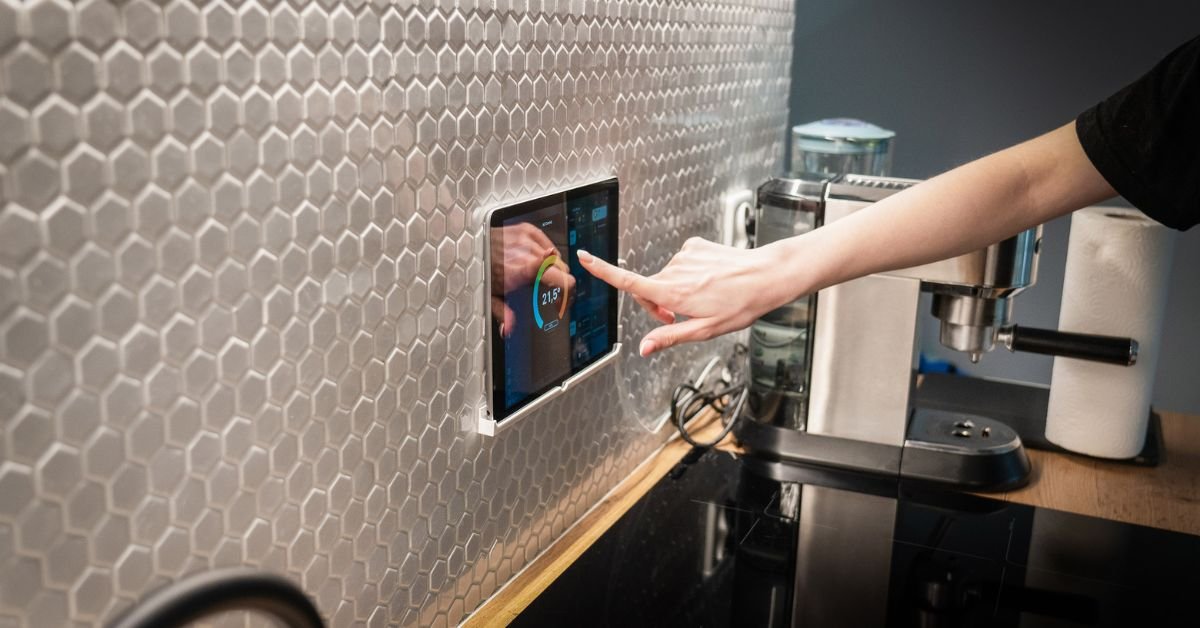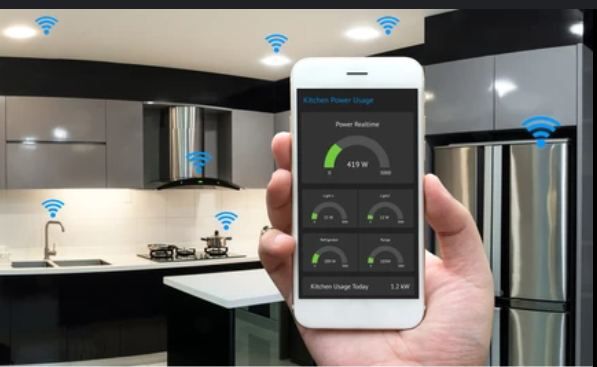What Usually Causes Kitchen Fires | The Only Protection Guide You Need 2025

Whether you are an amateur getting your first couple of dishes prepped up or simply a professional who wants to feel like the infamous chef Gordon Ramsay, safety should be your utmost priority.
Honestly speaking, A full-blown fire, smoke everywhere, panic, it’s not a pretty picture. While it might seem far-fetched, kitchen fires are incredibly common, topping the list of household fire incidents.
Knowing what causes them is the first line of defence in ensuring your culinary adventures stay safe and delicious. So, let’s dive in and explore the usual suspects behind these incidents and how you could combat them in the first place because it’s better safe than sorry.
The Top Causes Why Kitchen Fires Happen
Let’s Review some of the Top Causes of Why Kitchen Fires Happen.
1. Scenarios Relating To Human Error
While kitchen fires could arise in a number of ways, the root cause is always an individual making a rookie mistake in the first place. Here are a couple of scenarios demonstrating that.
Scenario # 1
One day you are getting ready for a late-night party, getting all dolled up, you switch the lights off and head to your car, reaching the spot where you are supposed to be and all of a sudden it hits you, have I turned the stove off?
This familiar scenario highlights a common cause of kitchen fires. Distraction leads to negligence, and before you know it, your house is set aflame.
The fire department arrives just in time to contain the blaze, but the damage is extensive, requiring extensive repairs and a hefty insurance claim.
Scenario # 2
In scenario two, human error is compounded by a lack of focus. You’re attempting to cook something complex with a lot of steps, and you aren’t completely focused.
You inadvertently let the food catch fire, causing a small blaze that spreads to the surrounding materials, igniting the kitchen and surrounding areas, and threatening the house itself. This could easily lead to a much larger disaster if not addressed promptly.
One of the biggest culprits in this scene is usually throwing cold food on a hot pan with grease which is basically a recipe for disaster as the temperature difference is massive creating a bubble of pressure which cannot be contained.
On the flipside, sometimes, Adding ingredients too quickly to a rapidly heating pan, without allowing adequate time for the previous ingredients to properly cook, can also create a build-up of heat and the potential for a small flare-up. This often leads to a contained incident and a burnt or scorched dish.
Speaking of adding stuff too quickly, improperly stirring or stirring too rapidly in a pan can cause the hot ingredients to splatter or the oil to overheat and ignite, spreading the fire beyond the initial source.
Scenario # 3
This one is by far the most obvious one, in fact, in the United States, kitchen fires due to being distracted by social media or something similar is quite a concern.
In this case, most individuals are distracted when they are cooking, while they are usually present in the kitchen, their mind is lurking elsewhere.
The distraction escalates into a full-blown kitchen fire, potentially spreading to adjacent areas and jeopardizing the safety of the entire structure.
The damage and financial implications could be substantial, possibly requiring complete renovation or evacuation of the building in worst-case scenarios.
Scenario # 4
It might sound like common sense, but it’s a shockingly common cause of kitchen fires, placing flammable materials too close to the stovetop or other heat sources can be dangerous therefore it should be highly avoidable or carefully dealt with depending on the materials.
These materials include cleaning detergents or sprays because these have chemicals like bleach which in reaction with water, produces toxic and deadly chlorine and chlorine oxides in extreme temperatures these gases tend to get produced at an astonishing and rapid pace as bleach, in chlorine is in equilibrium which is why maintaining a cooler ambient temp in this scenario will benefit you as higher temperature in such conditions is a tradeoff because of high energy level.
You would be surprised to know that even when put next to a running and operational dishwasher at around 140f or 60 Celsius, these units have water which in contact with detergents starts generating vapours of dangerous chlorine gasses.
Therefore I would highly suggest that it is safe and advisable to keep detergents and kitchen cleaners away from any electrical sources of heat and out of harms way, a cool and dry place with lower temp levels such as a cabinets would be an optimum location for safe storage locations.
2. Fires Due To Faulty Kitchen Equipment
Nowadays the kitchen is so automated, that you would be surprised to find that anything is actually working that is being powered by electricity. However, that’s where your culprit lies too because when things go haywire, you are in for fiery trouble.
It is fairly certain that anything electronic could be a liability, which is what makes fire safety even more important in households
For instance, as I mentioned before, anything with a plug has the potential to cause trouble. Frayed wires on toasters, coffee makers, and other small appliances are a common culprit.
These damaged wires can overheat or cause short circuits, potentially starting a fire right away in the electronic appliances.
Overloaded circuits and outlets are another risk factor which may also be one of the fire sources that causes the incidents in homes.
On the flipside, plugging too many appliances into a single outlet or using an extension cord inappropriately can overwhelm the circuit, resulting in heat buildup that may lead to short circuits, as mentioned above can lead to a full-blown fire so always make sure everything is in perfect working and checked.
Similarly, older appliances, especially those with worn-out insulation, have a greater potential to short circuit and catch fire, therefore having a newer model will be a much more valid option.
3. Mechanical Malfunction
The number of malfunctions that happen is way beyond your expectations, especially if it has something to do with higher temperatures or gas leaks. One of the finest examples of mechanical failure is your oven, stove, or simple line breakage or rupturing due to pressure.
But that’s not all, other smaller appliances, like toasters, deep fryers, and even microwave ovens, can also present unique fire risks.
Overfilling these units can result in a fire hazard in kitchen equipment, which could cause a potential burnout or overheating problem that was discussed earlier, similarly, any unattended operations with these appliances can cause havoc therefore it is important to use it by closely monitoring those operations carefully.
Furthermore, as mentioned previously, plugging in an electrical kitchen outlet with worn wiring and loose connections or using faulty wall sockets can also be problematic.
How Could I Combat These Problems?
The answer is plain and simple on this one, you need to do the exact opposite of what is mentioned above, these methodologies include taking steps such as,
- Regular maintenance and thorough inspection are very paramount because it greatly reduce risk factors and increase prevention measures by multiple factors if performed accurately, and when done carefully at specific intervals can increase kitchen appliance longevity.
- Replace damaged cords and plugs immediately; always watch for signs of wear or tear or burnt cables as it indicates overheating and fire hazard potential in wires.
- Ensure older appliances aren’t kept operational and replace those malfunctioning devices with new models without a single second thought, or when deemed appropriate to prevent an even worse scenario as compared to the minor electrical expenses which can easily be affordable as compared to replacing appliances.
- Make sure wall sockets aren’t exposed to anything flammable such as cleaning chemicals or damp cloths with excessive humidity which is generally a frowned upon attribute in cooking settings, therefore keeping them dry is advisable at all instances as moistness could interfere with electricity which could cause further trouble in terms of short circuits in outlets.
- In a similar fashion, always have an adequate amount of ventilation and ensure the safety procedures as mentioned previously are properly followed and executed in appropriate time intervals for optimum household safety levels.
- In fact even a monthly basis checking of these outlets could prove to be effective to a wide variety.
- Avoid overloading circuits by plugging too many appliances into a single outlet and ensure the electrical wiring is new by consulting a nearby professional electrician service that will change older wires since these tend to corrode by overuse.
The Final Word
The best defence against kitchen fires is a good offense, not that i am saying that you should be armed to the teeth and fighting fires with your fist but rather with your common sense, focus and attention.
As a recap to the article on what usually causes kitchen fires, I would simply say that Always double-check all electronic devices once a week and you should also treat their cables and wiring before plugging and using them as electronic equipment tends to be costly therefore ensuring those cables don’t overheat is an optimum approach that not only safeguards equipment but also assists in preventing hazardous scenarios from starting altogether by using damaged circuits.
Never drape anything over the handles of pots and pans while they’re on the stove since it can block ventilation leading to further problems of heat generation in appliances and cooking devices.
Lastly, Kitchen towels, oven mitts, and even paper towels or recipe cards can easily ignite if placed too close to a burner, so make sure you arent on the phone watching TikTok videos or reels when you are working in the kitchen, stay vigilant and be safe.






